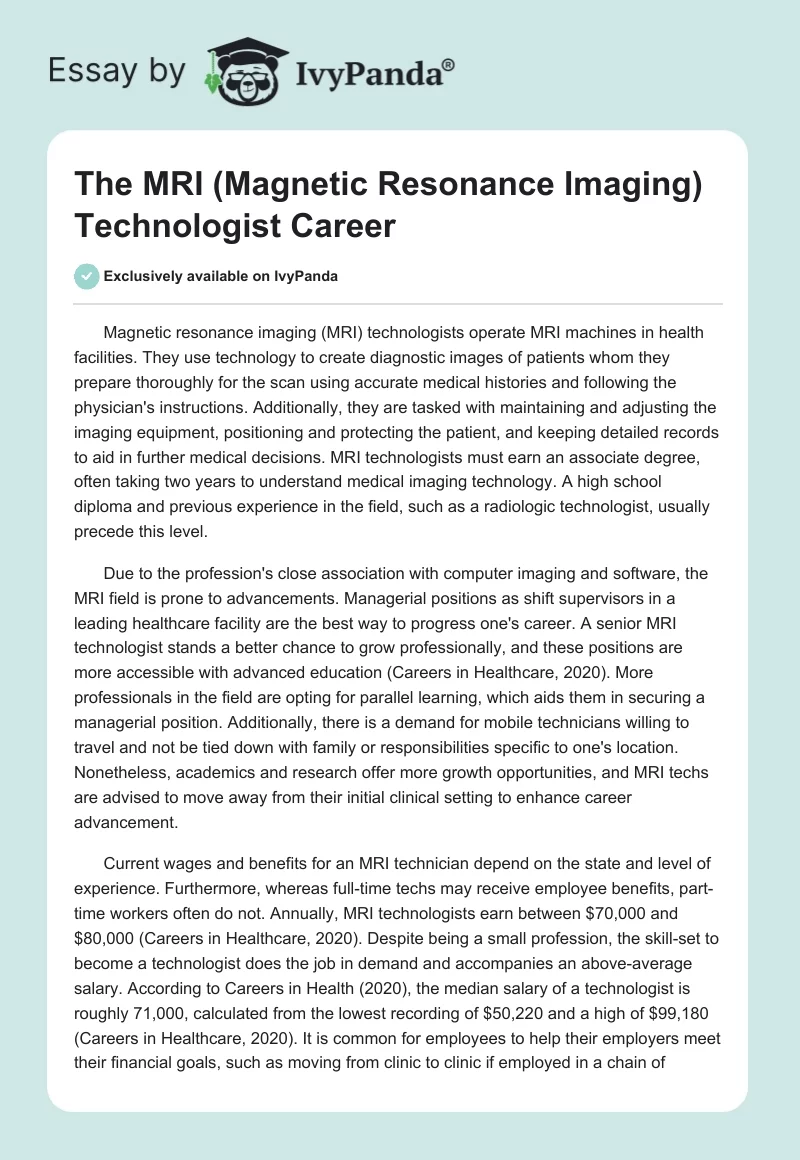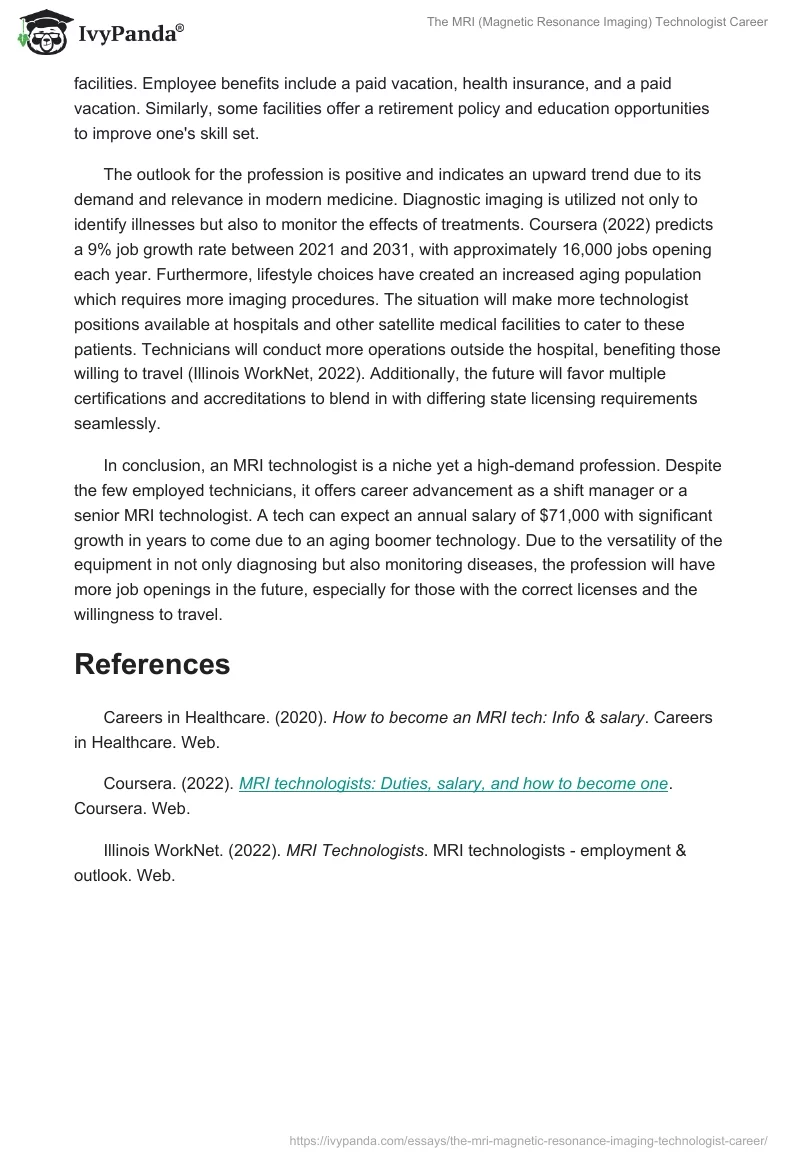Magnetic resonance imaging (MRI) technologists operate MRI machines in health facilities. They use technology to create diagnostic images of patients whom they prepare thoroughly for the scan using accurate medical histories and following the physician’s instructions. Additionally, they are tasked with maintaining and adjusting the imaging equipment, positioning and protecting the patient, and keeping detailed records to aid in further medical decisions. MRI technologists must earn an associate degree, often taking two years to understand medical imaging technology. A high school diploma and previous experience in the field, such as a radiologic technologist, usually precede this level.
Due to the profession’s close association with computer imaging and software, the MRI field is prone to advancements. Managerial positions as shift supervisors in a leading healthcare facility are the best way to progress one’s career. A senior MRI technologist stands a better chance to grow professionally, and these positions are more accessible with advanced education (Careers in Healthcare, 2020). More professionals in the field are opting for parallel learning, which aids them in securing a managerial position. Additionally, there is a demand for mobile technicians willing to travel and not be tied down with family or responsibilities specific to one’s location. Nonetheless, academics and research offer more growth opportunities, and MRI techs are advised to move away from their initial clinical setting to enhance career advancement.
Current wages and benefits for an MRI technician depend on the state and level of experience. Furthermore, whereas full-time techs may receive employee benefits, part-time workers often do not. Annually, MRI technologists earn between $70,000 and $80,000 (Careers in Healthcare, 2020). Despite being a small profession, the skill-set to become a technologist does the job in demand and accompanies an above-average salary. According to Careers in Health (2020), the median salary of a technologist is roughly 71,000, calculated from the lowest recording of $50,220 and a high of $99,180 (Careers in Healthcare, 2020). It is common for employees to help their employers meet their financial goals, such as moving from clinic to clinic if employed in a chain of facilities. Employee benefits include a paid vacation, health insurance, and a paid vacation. Similarly, some facilities offer a retirement policy and education opportunities to improve one’s skill set.
The outlook for the profession is positive and indicates an upward trend due to its demand and relevance in modern medicine. Diagnostic imaging is utilized not only to identify illnesses but also to monitor the effects of treatments. Coursera (2022) predicts a 9% job growth rate between 2021 and 2031, with approximately 16,000 jobs opening each year. Furthermore, lifestyle choices have created an increased aging population which requires more imaging procedures. The situation will make more technologist positions available at hospitals and other satellite medical facilities to cater to these patients. Technicians will conduct more operations outside the hospital, benefiting those willing to travel (Illinois WorkNet, 2022). Additionally, the future will favor multiple certifications and accreditations to blend in with differing state licensing requirements seamlessly.
In conclusion, an MRI technologist is a niche yet a high-demand profession. Despite the few employed technicians, it offers career advancement as a shift manager or a senior MRI technologist. A tech can expect an annual salary of $71,000 with significant growth in years to come due to an aging boomer technology. Due to the versatility of the equipment in not only diagnosing but also monitoring diseases, the profession will have more job openings in the future, especially for those with the correct licenses and the willingness to travel.
References
Careers in Healthcare. (2020). How to become an MRI tech: Info & salary. Careers in Healthcare. Web.
Coursera. (2022). MRI technologists: Duties, salary, and how to become one. Coursera. Web.
Illinois WorkNet. (2022). MRI Technologists. MRI technologists – employment & outlook. Web.


